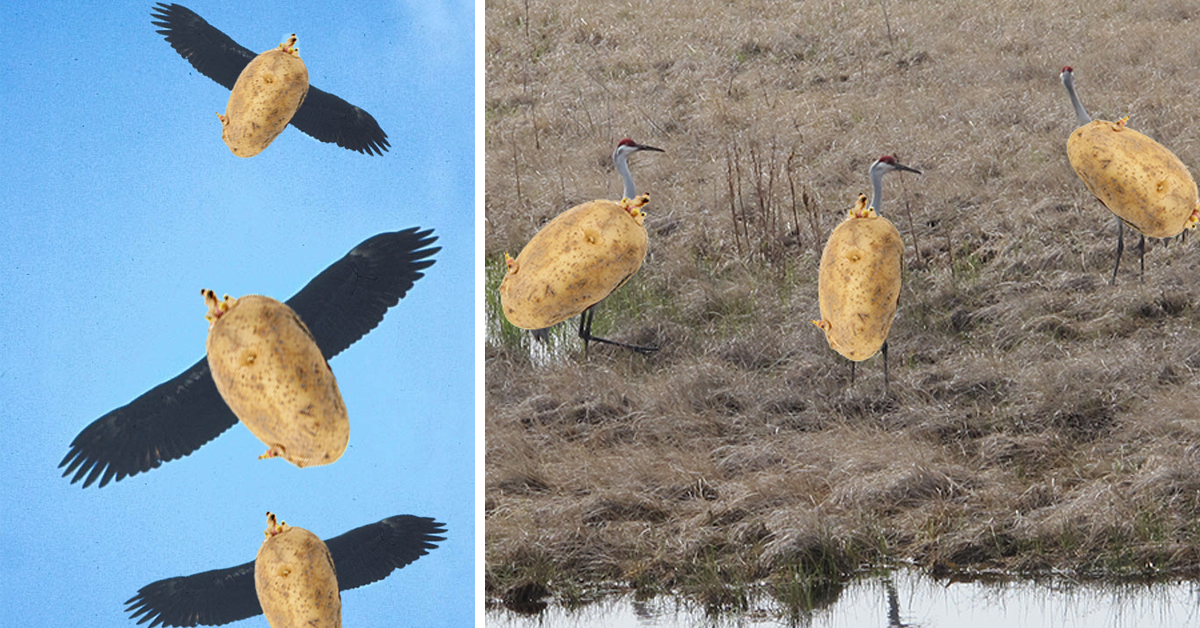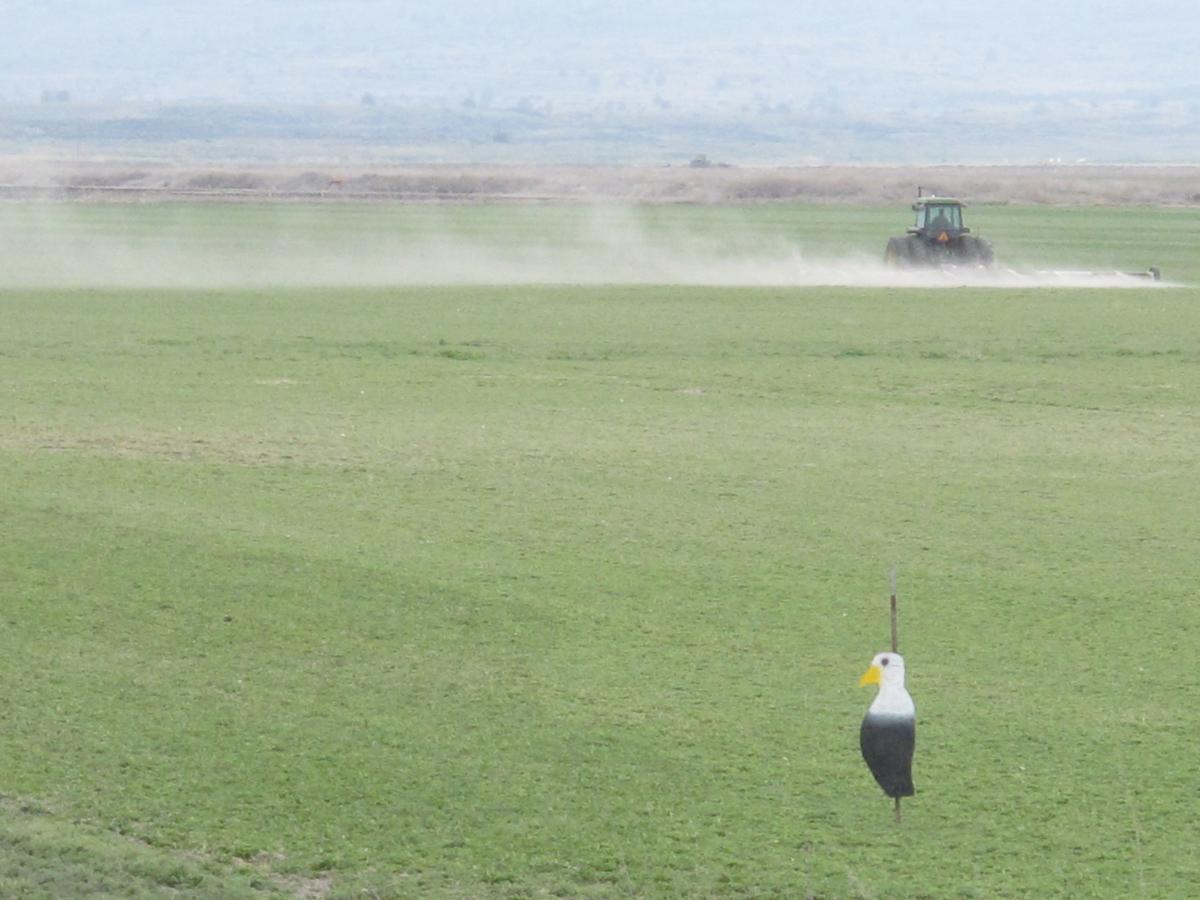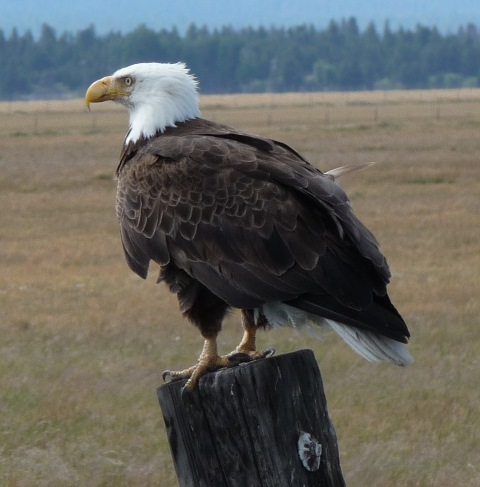
Decoys to scare away native wildlife. Workers dressed in hazmat suits spraying pesticides. Water diversions draining wetlands to irrigate industrial agriculture. Does this sound like a National Wildlife Refuge to you?

If your answer is “no” you are not alone. But this is exactly how the US Fish and WIldlife Service currently manages Lower Klamath and Tule Lake National Wildlife Refuges (NWRs). Over the last several decades, they have favored private industrial agribusiness on refuge lands over the needs of wildlife and preserving remaining wetlands, causing the number of birds visiting this region drop to one-fifth their historic levels. The good news is we have an historic opportunity to reform management of these refuges, and protect America’s wildlife!
Last spring, Oregon Wild and our allies won a legal battle over the U.S. Fish and Wildlife Service’s refusal to develop a long overdue “Comprehensive Conservation Plan” for five of the Klamath Basin’s national wildlife refuges. These plans, mandated by a 1997 law, must ensure that commercial activities on refuge lands do not harm wildlife. While the vast majority of refuges nationwide have completed such plans, Bear Valley, Tule Lake, Clear Lake, and Lower Klamath national wildlife refuges have missed the deadline for adopting plans by 4 years.
 The development and implementation of conservation plans for these refuges provide an historic opportunity to reform their management, and to ensure the needs of bald eagles, tundra swans, sandhill cranes, and white pelicans take priority over the demands of highly subsidized agribusiness operations. Today, more than 22,000 acres of National Wildlife Refuge lands in the Klamath is leased to private agribusiness, displacing wildlife, destroying wetlands, and wasting water.
The development and implementation of conservation plans for these refuges provide an historic opportunity to reform their management, and to ensure the needs of bald eagles, tundra swans, sandhill cranes, and white pelicans take priority over the demands of highly subsidized agribusiness operations. Today, more than 22,000 acres of National Wildlife Refuge lands in the Klamath is leased to private agribusiness, displacing wildlife, destroying wetlands, and wasting water.
Conservation plans for the refuges could help restore balance to the region and help reduce or eliminate this shameful practice.
The draft plan for these five refuges is now available for review and public comment. Please submit your comments today, and join us in making the case that eagles, ducks, and geese must take priority over agribusiness on refuge lands. Let’s help secure a better future for the Klamath’s spectacular wildlife!
NOTE: US Fish and Wildlife are only accepting comments via their website. Some suggestions are listed below. It is vitally important that you do not let these extra steps discourage you from commenting! Even a few sentences makes a difference.
In your comments, please let USFWS know that they should:
- Prioritize the conservation and restoration of migratory birds, fish, wildlife, plants, and their habitats within the refuges, and reduce or eliminate activities that harm these values.
- Eliminate the leaseland agribusiness program and restore these lands to wetlands that are actually managed for wildlife.
- Use all water rights owned by the US Fish and Wildlife Service for wildlife and wetlands first, not to support agribusiness. It is unacceptable for wetlands and wildlife areas to be dried up while the USFWS allows full water deliveries to industrial agriculture on refuge lands.
- Aggressively pursue programs to increase the amount of water available for wildlife, and use it to restore wetlands and improve conditions for native wildlife.
Comments may be submitted here: http://1.usa.gov/1TOWrrR
Or via regular mail:
Public Comments Processing
Attn: FWS-R8- NWRS-2016- 0063
Division of Policy and Directives Management
U.S. Fish and Wildlife Service
4401 N. Fairfax Drive, MS 2042-PDM
Arlington, VA 22203

